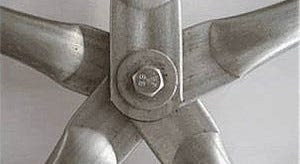HypnoBirthing
Meditative natural birth
Hypnobirthing is a technique that requires meditation, practice, and a quiet atmosphere during labor and delivery. No drugs are used and if done correctly, women who use the technique are said to experience little pain. Overall, it promotes transcending pain so a woman can experience birthing as other animals do. If you think about a cat, a deer, or any other mammal, during birth you would notice how quiet and calm they are. Our bodies are designed for this process, and hypnobirthing methods, including visualization, meditation, exercises and positions like the “Polar Bear” and “Leaping Frog,” empower a woman with this reminder. As soon as I became pregnant, I looked into every method I heard about from Lamaze to The Bradly Method to waterbirth to hypnobirth to natural birth. I met with a doula, had three midwives, watched any video on childbirth I could find, and researched online about L&D (labor and delivery). When the day finally came, I used certain hypnobirthing methods with great success.
My partner and I used the “birthing companion reading” (except we wrote our own script). Basically, we wrote things for each other and read them to each other before labor. Then during labor, my partner would whisper in my ear, “remember when…” and I envisioned myself out of my body: relaxed and calm. We used this in the last few hours of labor, especially. During labor, I meditated during each contraction when they came. I envisioned my cervix and whole body opening up, and I surrendered to this process. I also visualized myself at the ocean (Point Arena to be specific). It worked. I felt no pain at times. With the physical exercises, I used them all (25 hours is a long time!). My favorite position was the Toilet Sitting. I was on that toilet for over an hour. It was amazing how comfortable it was, and I actually fell asleep between a few contractions. All of the squatting exercises were great, too. The Leaping Frog is a version of a squat, as was the Supported Squat. When a contraction came on it was important for me to let gravity and breathing help me open up. Anything that required getting low to the ground and relaxing my muscles worked for me. I didn’t like any of the reclining positions. It wasn’t comfortable for me, personally.
I’m not sure how hypnobirthing is exactly different from basic meditation techniques, because I never practiced meditation before I was pregnant. I’ve taken a lot of yoga and it’s always worked for me for relaxation, but meditation was something I was always wary of. I have a hard time quieting my mind, which is why I was so interested in hypnobirthing. I never took any hypnobirthing classes. I only read this book and practiced what I liked from it. Since it took me 25 hours to finally deliver our newly-born son, as the day progressed, I found myself using everything I learned from childbirthing classes, birth partner yoga, and prenatal yoga classes (eventually, I found I needed to make a lot of low, primal birth sounds!). If we have a second child, though, I will be more diligent about practicing this method in particular. The book itself was easy to read, provided interesting theories, and replaced my fears with strength. The book was also really my first step towards feeling empowered and excited about going through labor without drugs.
06/11/08Excerpt
For the birthing parents, birth is not about science, it's not about anatomy, it's not about doctors or midwives or nurses, it's not about who has control. It's about family, parents and their babies. Families embracing the belief that birth is about them and the wonderful life-changing transition they are making into parenthood don't really need to be taught how to birth. They simply need to learn about birth. They come to understand that when the mind is free of stress and fear that cause the body to respond with pain, nature is free to process birth in the same well-designed manner that it does for all other normal physiological functions.
The Leaping Frog position comes to us from midwives in the Virgin Islands. This easy, forward squat is used in many places in the world. Not only does this position help to tone your muscles, but it also provides you with one of the best positions in which to labor during the birthing phase. While women in other cultures regularly use a squatting position for birthing, you must remember that these women use this posture for much of what they do on a daily basis. Western women are not naturally inclined to squatting, so this posture needs practice. There are two ways of assuming the Leaping Frog stance -- with your arms thrust forward inside your spread knees or with your arms behind you at the side of your hips. The second position is an ideal position to assume for birthing as it relieves all pressure from the buttocks, and provides open and clear access for both baby and attendant.
If a pregnant woman wants and needs to be pampered, "waited upon" and coddled, and buys into the concept that pregnancy is an abnormal condition and she is "ill," the attention that she gains during a troublesome pregnancy and a difficult birthing can definitely make it all worthwhile in her mind. She barely tolerates her pregnancy and constantly proclaims her annoyance at all the aches, pains and other pregnancy "disorders," while she uses body language that demonstrates her plight. Family members often contribute to this scenario by cautioning the woman that she must "give in" to her frailty during this precarious time of her life.
HypnoBirthing Marie Mongan 2005, 326 pages $14











